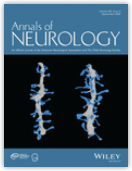 SMA is caused by the lack of the SMN protein. This degenerative disease of the motor neuron results in paralysis of very varying onset and severity. There are four types, from most severe (type 0) to the mildest (type IV), depending on the age of onset of the disease, the best motor function achieved. In type III SMA, the child has acquired independent walking but may lose it. We refer to SMA IIIA if the paralysis sets in between 18 months and 3 years, and SMA IIIB beyond.
SMA is caused by the lack of the SMN protein. This degenerative disease of the motor neuron results in paralysis of very varying onset and severity. There are four types, from most severe (type 0) to the mildest (type IV), depending on the age of onset of the disease, the best motor function achieved. In type III SMA, the child has acquired independent walking but may lose it. We refer to SMA IIIA if the paralysis sets in between 18 months and 3 years, and SMA IIIB beyond.
In an article published in September 2020, an international consortium on SMA reported the results of a natural history study performed in a cohort of 199 patients with type III SMA followed up in the United States, United Kingdom, Italy, Belgium and Spain, but not receiving innovative therapies. The evolution of the disease was measured by the Hammersmith functional scale in its extended version, with a multivariate analysis according to other potential determinants (age of onset, ambulatory status, number of copies of the SMN2 gene, gender ). The authors estimate that a breakpoint in evolution occurs from the age of seven, a pivotal age beyond which the evolutionary slopes of the two subpopulations (SMA IIIA and IIIB) diverge significantly. Neither the gender nor the copy number of the SMN2 gene influences these slopes. This natural history will be useful for interpreting the effects of innovative treatments in this population, but also for building new clinical trials.
